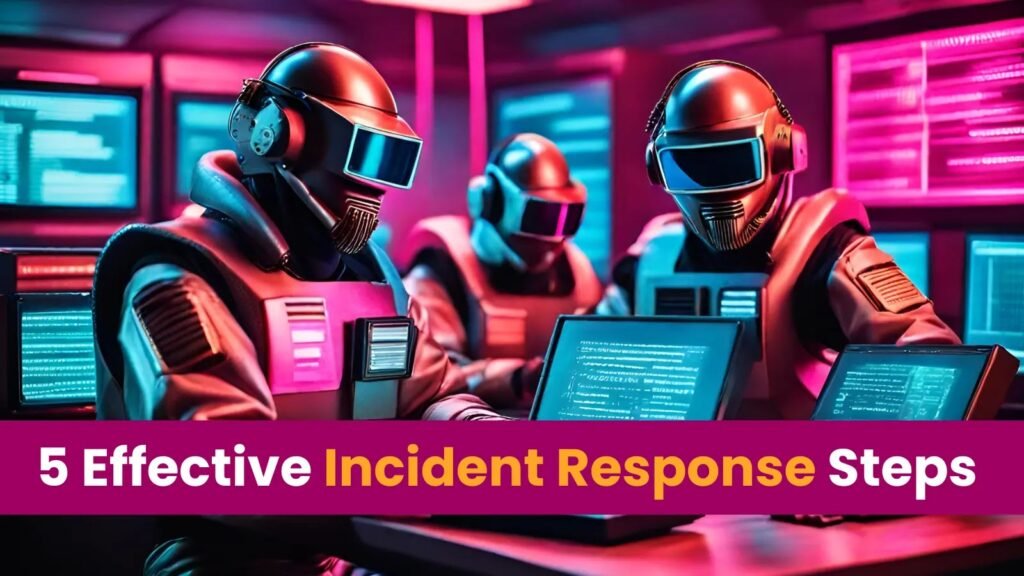Effective Steps to Accelerate Cybersecurity Incident Response
Modern security tools continue to evolve, improving their ability to protect organizations from cyber threats. Despite these advances, bad actors still occasionally find ways to infiltrate networks and endpoints. Therefore, it is critical for security teams to not only have the right tools but also be equipped with effective incident response (IR) strategies to mitigate damage quickly and restore normal operations.
Importance of Incident Response (IR)
Security teams must be prepared to respond to incidents with agility and precision. This involves more than just having the right tools; it requires a robust incident response templete, continuous training, and leveraging every incident as a learning opportunity to prevent future breaches.
The SANS Institute outlines a six-step framework for an effective IR process:
- Preparation
- Identification
- Containment
- Eradication
- Recovery
- Lessons Learned
You can utilize this guide and tools like Cynet’s All-in-One Cybersecurity Solution to provide a breakdown of each step and the role of technology in enhancing the effectiveness of your IR process.
1. Preparation
Goal: Equip your team to handle incidents efficiently.
Preparation is the foundation of any successful incident response. It begins with educating everyone in the organization about potential cybersecurity threats, as human error is responsible for many breaches. Training should be regularly updated to reflect evolving threats, such as phishing and social engineering techniques.
An incident response plan (IRP) should clearly define roles and responsibilities for all stakeholders, including:
- Security leaders
- Operations managers
- Help desk teams
- Identity and access managers
- Audit, compliance, and communication teams
Technology’s Role: Leveraging Incident response tools such as Endpoint Detection and Response (EDR) or Extended Detection and Response (XDR) is essential. These tools allow for rapid containment, such as isolating compromised devices. Additionally, preparing a robust logging system and virtual environments for incident analysis is crucial. Cynet backs the All-in-One Platform with 24/7 MDR support by CyOps, Cynet’s in-house SOC.
2. Identification
Goal: Detect and document indicators of compromise (IOCs).
Incidents can be detected in several ways:
- Internal Detection: Through proactive monitoring or alerts from security products.
- External Detection: By third-party consultants or business partners.
- Exfiltrated Data Disclosure: The worst-case scenario is discovering the breach after sensitive data has been exposed online.
A balanced alert system is vital to avoid alert fatigue, where too many or too few alerts can overwhelm or mislead the security team. During this phase, all IOCs (e.g., compromised hosts, malicious files, unusual processes) should be documented.
3. Containment
Goal: Limit the scope of damage.
Containment is a pivotal phase where the focus is on preventing the attack from spreading further. This phase can be broken into:
- Short-term containment: Immediate actions like shutting down or isolating devices.
- Long-term containment: More strategic actions like patching systems or changing passwords.
Critical devices such as domain controllers and file servers should be prioritized to ensure they are not compromised. It’s important to document which assets have been affected and categorize them accordingly.
4. Eradication
Goal: Eliminate the threat completely.
Once containment is achieved, the next step is to remove the threat entirely. This can involve:
- Cleaning: Deleting malicious files and registry entries.
- Reimaging: Reinstalling the operating system to ensure complete removal of the threat.
As always, documentation is important. The IR team should meticulously record every action to ensure nothing is overlooked. Active scans should be performed after eradication to verify the success of the cleanup.
5. Recovery
Goal: Return to normal operations.
The recovery phase marks the return to regular business operations. However, before resuming full functionality, it’s important to ensure that no residual IOCs remain on the system and that the root cause of the incident has been addressed. Implementing fixes learned from the incident will help prevent future occurrences.
6. Lessons Learned
Goal: Reflect on the incident and improve response capabilities.
After the incident, teams should assess each phase of the response:
- Identification: How quickly was the breach detected?
- Containment: How fast was the spread of the attack stopped?
- Eradication: Were any signs of compromise left after the cleanup?
This is the time to revisit your IR plan, update it, and ensure that your team is better improvements prepared for future incidents. For example, update your incident response plan template. Address gaps in technology, processes, or training discovered during the incident.
Final Tips for Staying Secure
Here are four suggestions to enhance your security posture:
- Log everything: The more you log, the easier it will be to investigate incidents.
- Simulate attacks: Regularly test your defenses with simulated attacks to evaluate your team’s response.
- Train your personnel: Regular training for both end users and the security team is essential, as human error is a major cause of breaches.
- Automate where possible: Use end-to-end automated solutions, like Cynet’s All-in-One Cybersecurity Platform, to reduce manual effort and maximize efficiency.
By following these steps and continuously refining your incident response strategy, your organization can stay prepared and resilient in the face of evolving cyber threats.






